Owls are fascinating birds of prey. They exhibit a lot of interesting behaviors and vocalizations. One such is, they hoot. After the sun sets, owls hooting is one of the strange calls of nature. But, why do owls hoot?
A number of reasons can follow to define this behavior. Experts also have a few theories that state why the owls hoot. If you are interested in learning more, this is the right place to start.
Today, we will describe hooting and why owls hoot. You may not be ready for the answer. Stay with us and keep reading for more.
By the end of our article, you will have a complete knowledge of the hooting of owls. Get ready for complete answers to why, when, how, and which ones.
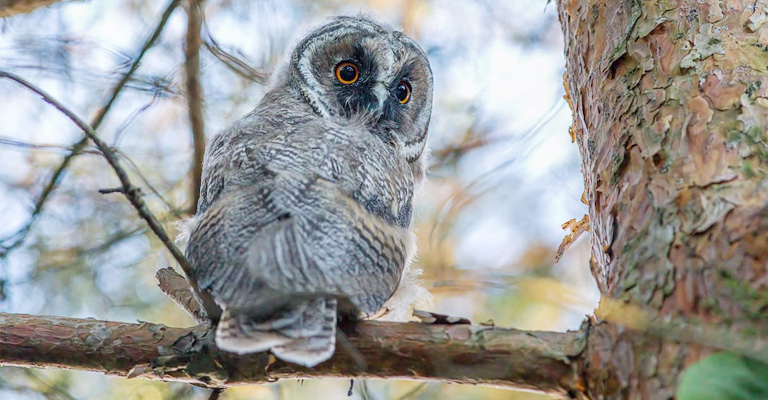
How Owls Behave,
- Owls are exceptional nocturnal hunters. The special wing feathers help them fly silently.
- Owls’ eye sockets are locked, meaning they can’t rotate the eyes, not to mention their flexible neck fills up the void.
- They are quite territorial. They would fight aggressively to protect their nest from intruders and other predators.
- Some owl species perform elaborate courtship rituals, such as mutual calling and even gift exchanges.
- They rest in tree cavities, nest abandoned by other birds, and even in burrows (such as the burrow owls).
- They are birds of perfect camouflage. The mottled feathers help them blend nicely in the wild and prevent getting noticed by predators and prey.
- Owls are generally quiet, solitary birds and do not form flocks. They prefer to hunt and live alone or in small family groups.
Why Do Owls Hoot?
Many birds communicate vocally. They sing, call, squeak, rattle, whine, click, and drum with unique tone.
Owls are no exception too! And the hooting is especially distinctive. They hoot for different reasons. As per experts, the primary reason is to call other owls and communicate.
However, other reasons also follow. They may hoot in response to a territory conflict or simply because they want to attract partners of the opposite sex. Do owls mate for life? The answer lies here.
The special vocal anatomy is the primary reason why owls can generate such subtle yet strange hoots. They don’t have vocal cords like us, instead, they have a special vocal syrinx that produces all the sounds.
It can create the low pitch sounds and what’s more, they are ideally received by other owls of any kind.
Owls can Hoot for Different Reasons
It’s a natural call and they may hoot for danger or affection. Find out below why do owls hoot mostly.
1) A Call of Nature:
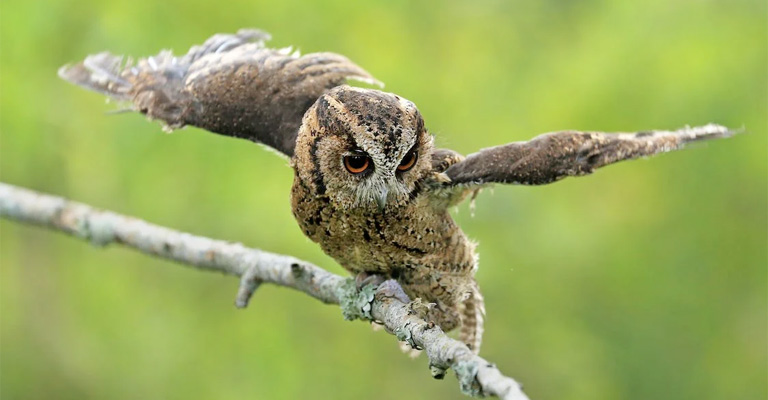
Most birds are territorial. They would fight to any level to protect their home and feeding territory. Owls would do the same too, particularly dominant during the breeding seasons.
Male owls can hoot for two natural causes – whether they are declaring ownership to a specific territory or it’s simply a mating call, as mentioned before. A female owl can identify the hooting calls for suitable partners and respond to the right one.
It is interesting that not all owl species hoot the same. Each species hoots differently. It acts as a special vocal signature.
2) Communication Between Families
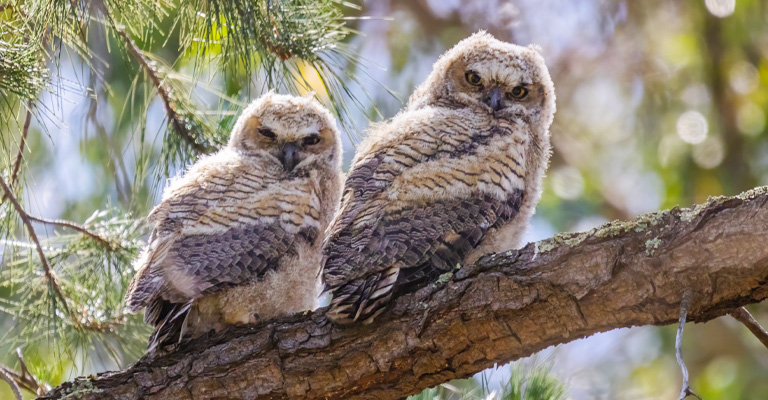
Owls are ideal parents. They develop affection and can bond for life. The papa owl usually hunts for the family and is the sole breadwinner. Meanwhile, the mamma owl stays at home and shields the baby owls.
So, you see, hooting is not only about mating calls or possession of territory. They hoot to communicate within the family. For example, the young ones can’t hoot. They would scream and beg for food.
The mamma owl can then hoot in search of her partner without leaving the nest.
3) A Distress Call
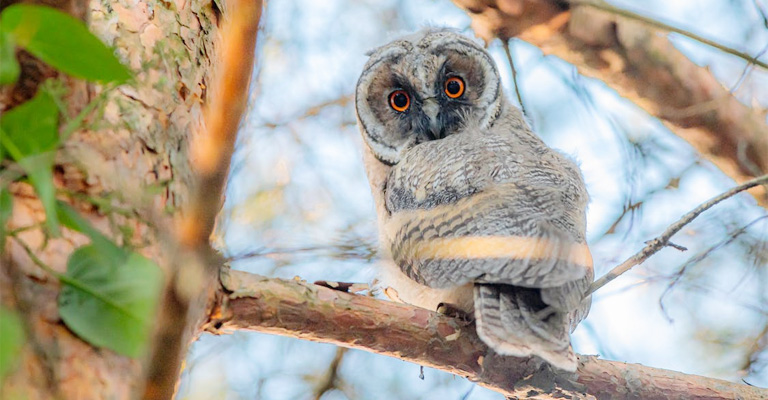
As said before, owls don’t like visitors often. They would guard the feeding territory to the living nest and go to any magnitude for this.
Keep in mind that, they are not kind to intruders, other birds, or even other owls. When someone tries to intrude on their territory, they can hoot as a clear warning sign.
It is also a signal to let the intruders know that, now may not be a good time to intrude as they are at home. Also, they hoot to concern other owls when a predator is too close and they are still not aware.
Here are the primary reasons why do owls hoot. All the owl species don’t have the same hooting sound. Also, not all the owl species hoot too. Continue reading to find out more about this.
Owls That Hoot
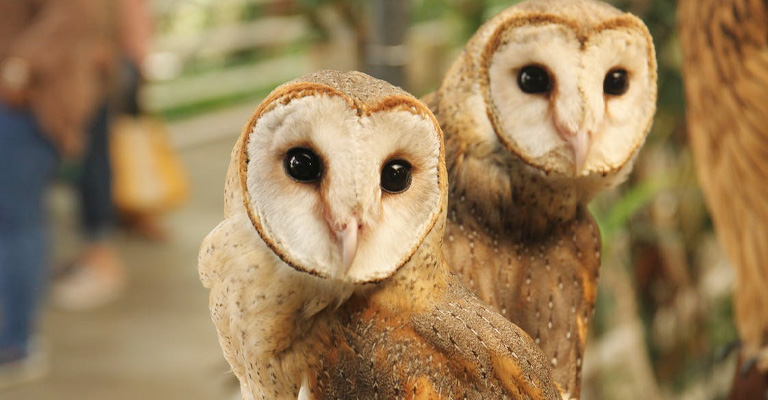
It is the great horned owl that generates the most distinctive hooting calls. Some owls may make a heavy mellow sound which can be associated with hooting. Other owls that significantly hoot are,
- Barred Owl
- Tawny Owl
- Spotted Owl
- Eastern Scops Owl
- African Wood Owl
- Spectacled Owl
Owls That Don’t Hoot:
Some owls don’t make the traditional hooting calls. They communicate using different sounds other than hoots.
- Barn Owl
- Eastern Screech Owl
- Burrowing Owl
- Northern Saw-Whet Owl
- Pygmy Owl
- Ferruginous Pygmy Owl
When Do the Owls Hoot?
Now, we know why do owls hoot. But do you know when the owls hoot? If not, you have the answers here.
Owls are nocturnal birds. They are most active during the twilight hours of dawn and dusk and throughout the night. They can stay hidden in the dark and hoot. The sound may seem creepy to you if it strikes you suddenly.
In short, the hooting calls generally come after sunset and before sunrise. More to this, owls make most sounds during the breeding seasons. You may hear the hooting calls more frequently than at other times of the year.
The young ones can’t hoot early. It takes almost a year to reach a point when they can truly hoot. Take the great horned owls for an example.
Additional,
In addition to hooting, another remarkable survival skill of owls is their silent flight. The structure of owls’ feathers is ideal for stealthy flight. It reduces the sound of flapping wings and allows them to proceed to the prey in complete silence.
They don’t hoot during a stealth flight. In fact, making any sound now can aware the prey and drive them away.
In Short,
Owls are interesting creatures to study. The more you know them, the more they will surprise you. Hooting is a unique tone of owls but they are not alone.
Other living creatures like katydids, frogs, crickets, and mockingbirds also hoot to concern the surroundings.
However, if you want to experience the hooting sound, it has to be really dark when you set out. So, are you ready? Let us know in the comment section when was the last time you heard the hooting call of owls and where.
We can surely raise a discussion. Also, don’t forget to share our articles with others. It will help us grow too!